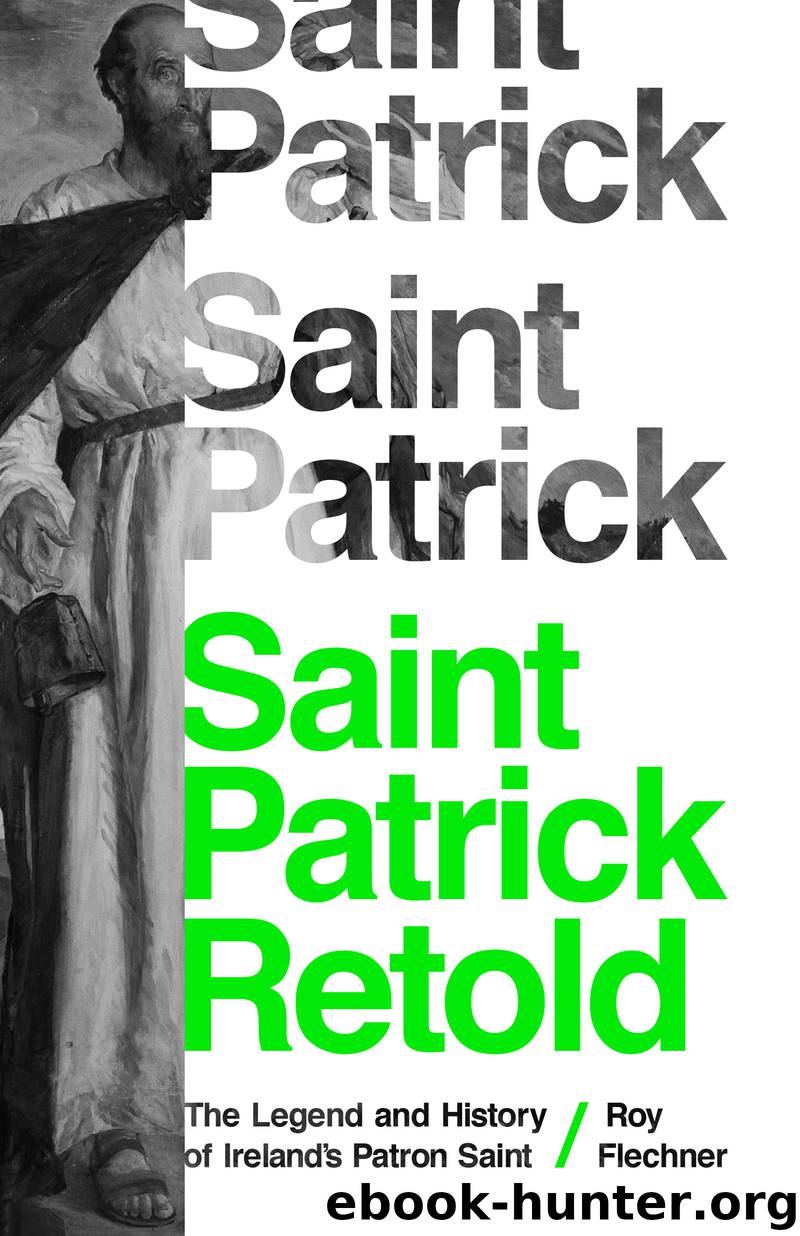Saint Patrick Retold by Flechner Roy;

Author:Flechner, Roy;
Language: eng
Format: epub
Publisher: Princeton University Press
Published: 2019-01-20T16:00:00+00:00
There is little doubt that Tara, Crúachain, Dún Ailinne, and Emain Macha were primarily sites of ritual activity because they lack obvious defensive features that would have marked a high-status place of habitation. Royal inaugurations with pagan undertones are known to have taken place at the Feis Temro (Feast of Tara), the last of which, according to the Annals of Tigernach, was celebrated by King Díarmait mac Cerbaill in 558 or 560.21 At Emain Macha we may even witness the vestiges of what some archaeologists believe was a temple. A large oak post, the remains of which were uncovered on-site, has been argued to have sustained the structure, although there is no certainty that it was covered by a roof. The precise dating of wood by dendrochronology suggests that the oak was felled in 95 or 94 BC. However, given that temples (as distinct from shrines) in pre-Christian Europe are known almost exclusively from the Roman world, the likelihood that Emain Macha had a temple is low. Apart from presumed temples, the archaeological evidence for continual use of the sites as centres of ritual activity tends to be more banal and is composed mainly of graves. For example, the so-called Mount of the Hostages at Tara was originally a passage tomb dating from the late Neolithic period (ca. 2000 BC), but it continued to be used for burial throughout the Bronze Age. Burial at the Rath of the Synods, which we have already encountered in the context of votive offerings, continued into the early centuries AD. Crúachain and Emain Macha, which are known as ceremonial royal sites from the heroic legend of the Ulster Cycle, both show evidence of continual burial activity.
Tara and Crúachain are two of the many cultic sites that have been reused repeatedly for burial. Again, we have here examples of the reuse of prehistoric sites, but in this case for burial. Reuse of places that had man-made burial mounds (tumuli) was common. The Middle Bronze Age barrow at Carrowbeg North (County Galway) had Iron Age burials inserted into it. At Kiltierney (County Fermanagh), nineteen Iron Age barrows were erected around a Neolithic tumulus, and the tumulus itself has Iron Age cremation burials inserted into it. Complexes of tumuli of various kinds are known from other places that were inhabited since prehistoric times in Britain, Ireland, and the adjacent isles. Sutton Hoo in Suffolk is the most famous example (although it had no preexisting tumuli). Established on a site occupied since Neolithic times, it consisted of around twenty barrows dating from the late sixth or early seventh century that contained luxury grave goods, a ship, and even a horse buried beside a warrior.
The reuse of a cemetery site made it possible to assert the antiquity and continuity of community identity across generations, but also to stake claims to ancestral land. This often involved the veneration of an ancestor or of ancestors, which is among the reasons why, in Ireland, ordinary family cemeteries, ferta, were disapproved of by certain churchmen, who advocated burial in a church instead.
Download
This site does not store any files on its server. We only index and link to content provided by other sites. Please contact the content providers to delete copyright contents if any and email us, we'll remove relevant links or contents immediately.
| Military | Political |
| Presidents & Heads of State | Religious |
| Rich & Famous | Royalty |
| Social Activists |
Waking Up in Heaven: A True Story of Brokenness, Heaven, and Life Again by McVea Crystal & Tresniowski Alex(37494)
Empire of the Sikhs by Patwant Singh(22774)
We're Going to Need More Wine by Gabrielle Union(18641)
Hans Sturm: A Soldier's Odyssey on the Eastern Front by Gordon Williamson(18331)
Leonardo da Vinci by Walter Isaacson(12810)
The Radium Girls by Kate Moore(11627)
Tools of Titans by Timothy Ferriss(7824)
Educated by Tara Westover(7694)
How to Be a Bawse: A Guide to Conquering Life by Lilly Singh(7162)
Permanent Record by Edward Snowden(5546)
The Last Black Unicorn by Tiffany Haddish(5418)
The Rise and Fall of Senator Joe McCarthy by James Cross Giblin(5151)
Promise Me, Dad by Joe Biden(4912)
The Wind in My Hair by Masih Alinejad(4850)
The Crown by Robert Lacey(4578)
A Higher Loyalty: Truth, Lies, and Leadership by James Comey(4557)
The Iron Duke by The Iron Duke(4126)
Joan of Arc by Mary Gordon(3790)
Stalin by Stephen Kotkin(3730)
